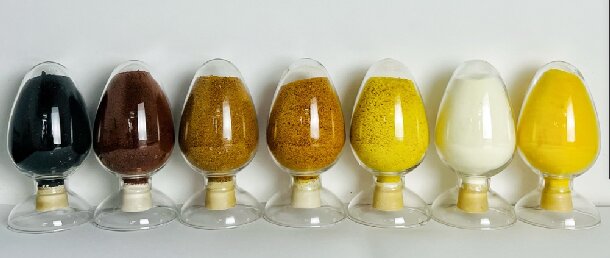For many newcomers, these two agents seem to be quite difficult to distinguish, in fact,
PAM is an organic polymer compounds, the Chinese name is polyacrylamide, the average molecular weight from thousands to tens of millions of above are possible.
PAC is an inorganic material, the Chinese name of the polymerisation of aluminium chloride. So what are the differences between PAC and PAM?

1. Different flocculation mechanism
PAC can flocculate because after entering the water will form a network structure, the solid particles in the pocket together. And PAM can flocculate because it can break the electric balance between small particles after entering water, so that the solid particles in the wastewater get together by themselves.
2. Different colours
PAC is generally white, yellow-brown and yellow. And PAM is only a white powder.
3. Different dosage
The dosage of PAC is generally 200-300PPM, that is, an average of 200-300mg per litre of wastewater, while the dosage of PAM is generally 3-10PPM, about 3-10mg per litre of wastewater. PPM stands for parts per million, 1PPM = 0.001%, and is generally used when the concentration is low.
The main products of flocculant manufacturer Xinhuan Water Treatment are:
White polyaluminium chloride (food grade),
drinking grade polyaluminium chloride,
industrial grade polyaluminium chloride,
anionic polyacrylamide, cationic polyacrylamide, nonionic polyacrylamide, petroleum recycling polyacrylamide, oil recovery polyacrylamide, polyacrylamide, polymer flocculant polymer flocculation coagulant,
polymeric ferrous sulphate, polymerized iron and aluminium chloride, and other water treatment chemicals. Welcome customers to write to us to negotiate business! Tel/WhatsApp:86 15936201203 Email:maggie@xhwtm.com Contact:Maggie
 1. Different flocculation mechanism
PAC can flocculate because after entering the water will form a network structure, the solid particles in the pocket together. And PAM can flocculate because it can break the electric balance between small particles after entering water, so that the solid particles in the wastewater get together by themselves.
2. Different colours
PAC is generally white, yellow-brown and yellow. And PAM is only a white powder.
3. Different dosage
The dosage of PAC is generally 200-300PPM, that is, an average of 200-300mg per litre of wastewater, while the dosage of PAM is generally 3-10PPM, about 3-10mg per litre of wastewater. PPM stands for parts per million, 1PPM = 0.001%, and is generally used when the concentration is low.
The main products of flocculant manufacturer Xinhuan Water Treatment are:
White polyaluminium chloride (food grade), drinking grade polyaluminium chloride, industrial grade polyaluminium chloride, anionic polyacrylamide, cationic polyacrylamide, nonionic polyacrylamide, petroleum recycling polyacrylamide, oil recovery polyacrylamide, polyacrylamide, polymer flocculant polymer flocculation coagulant, polymeric ferrous sulphate, polymerized iron and aluminium chloride, and other water treatment chemicals. Welcome customers to write to us to negotiate business! Tel/WhatsApp:86 15936201203 Email:maggie@xhwtm.com Contact:Maggie
1. Different flocculation mechanism
PAC can flocculate because after entering the water will form a network structure, the solid particles in the pocket together. And PAM can flocculate because it can break the electric balance between small particles after entering water, so that the solid particles in the wastewater get together by themselves.
2. Different colours
PAC is generally white, yellow-brown and yellow. And PAM is only a white powder.
3. Different dosage
The dosage of PAC is generally 200-300PPM, that is, an average of 200-300mg per litre of wastewater, while the dosage of PAM is generally 3-10PPM, about 3-10mg per litre of wastewater. PPM stands for parts per million, 1PPM = 0.001%, and is generally used when the concentration is low.
The main products of flocculant manufacturer Xinhuan Water Treatment are:
White polyaluminium chloride (food grade), drinking grade polyaluminium chloride, industrial grade polyaluminium chloride, anionic polyacrylamide, cationic polyacrylamide, nonionic polyacrylamide, petroleum recycling polyacrylamide, oil recovery polyacrylamide, polyacrylamide, polymer flocculant polymer flocculation coagulant, polymeric ferrous sulphate, polymerized iron and aluminium chloride, and other water treatment chemicals. Welcome customers to write to us to negotiate business! Tel/WhatsApp:86 15936201203 Email:maggie@xhwtm.com Contact:Maggie